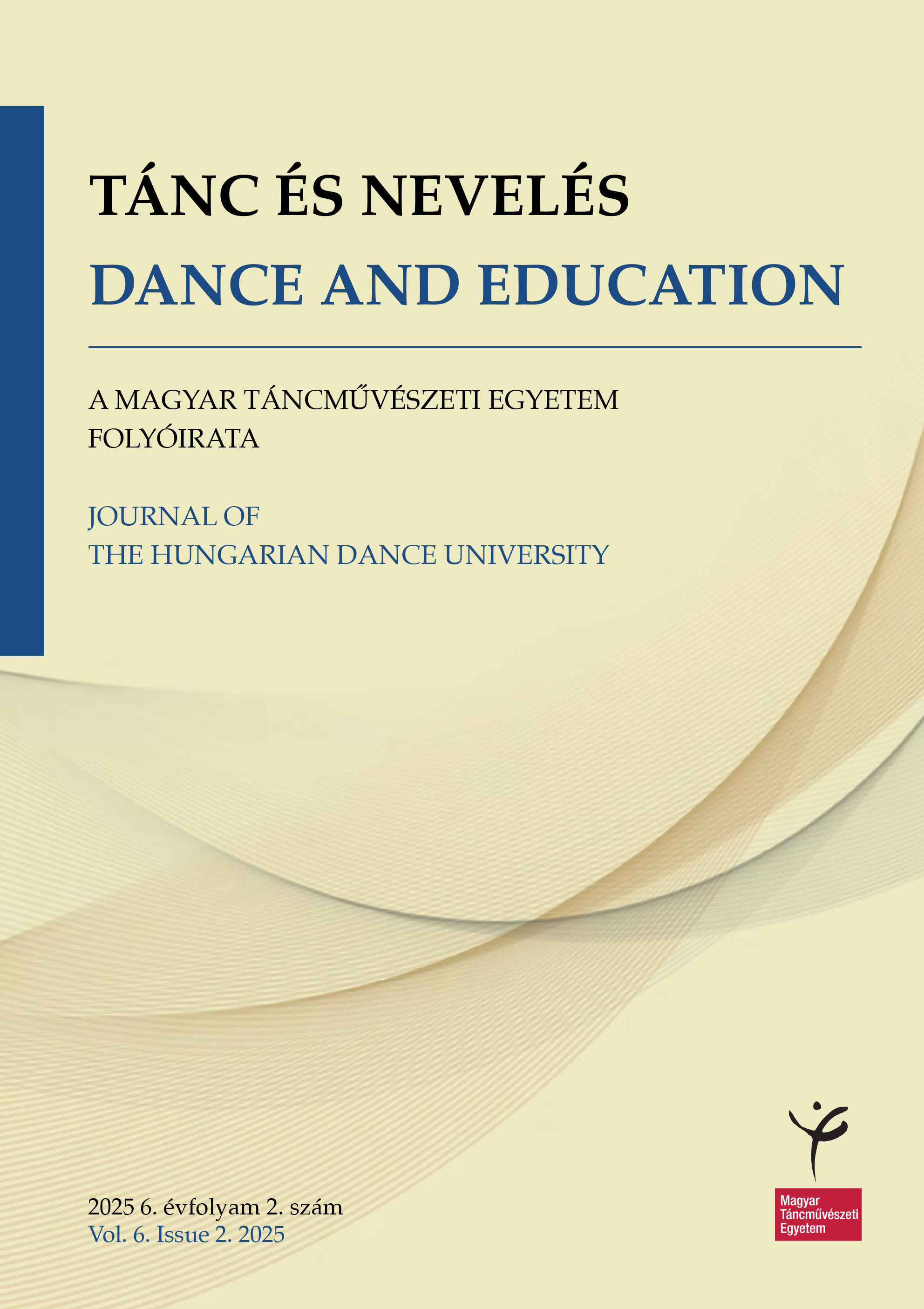Injury Patterns Among Hungarian Professional Folk Dancers
Abstract
The prevalence of musculoskeletal pain and injuries among dancers is high due to the constant high physical strain and short recovery times. The aim of our study is to identify the most common pain and injuries among Hungarian professional folk dancers and to investigate their relationship with lumbopelvic function. Ninety-six professional dancers completed a standardized questionnaire about pain and injury experienced over the past year, and twenty-four dancers were physically examined. During the physical assessment, we used the Knee Lift Abdominal Test (KLAT) and the Active Straight Leg Raise (ASLR) test to assess lumbopelvic motor control. In the study population, the most common injuries and pains in the past year occurred in the ankle (18.8% and 32.3%), knee (16.7% and 37.5%), and lower back (12.5% and 38.5%). The ASLR test showed a significant positive correlation with ankle and/or knee injuries (r = .50, p = .007). In conclusion, the prevalence of lower limb injuries and lower back pain is extremely high among Hungarian folk dancers. Ankle and knee injuries are associated with reduced lumbopelvic motor control.
Copyright (c) 2025 Csilla Almásy, Klára Soltész-Várhelyi, Anita Rusinné Fedor

This work is licensed under a Creative Commons Attribution 4.0 International License.







4.png)
